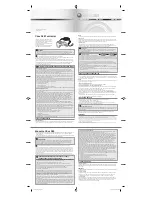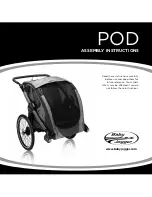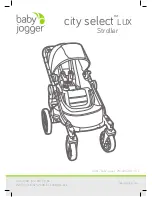
CONTENTS OF THE CARTON
• Unit (1)
• Base Plate (1)
• Key for switch to manual operation (1)
• Hardwarebag (1)
• Manual (1)
• Arm, straight (1)
• Arm, bent (1)
BEFORE YOU BEGIN
The AGO250 is suitable for use with wide piers, up to about
30 cm in width.
Each gate wing should not exceed 2.5m in width or 200kg
in weight.
The maximum recommended opening angle of the gate is
125 degrees.
Ensure that ample space is available next to the drive for the
arms and assembly. Gates exposed to a high wind load must
be fixed with an electric lock for additional protection.
While the drive is fitted with internal limit switches, stops
should also be mounted on the ground to prevent gate rattle
or flutter.
There are many factors which determine the
choice of the right actuator. Assuming the gate is
working properly, the initial output required from the
drive for setting the gate in motion is at its highest.
♦
Size of gate: The size of the gate is very important. The
correlation between gate size and wind force can distort the
amount of power need.
♦
Weight of gate: The specified weight of the gate only gives
a rough indication of the output required from the drive. The
function which the gate is expected to perform is also
important in this connection.
♦
Temperature: Low outdoor temperatures can make it more
difficult or impossible to set the gate into motion (e.g.
because of soil changes).
High outdoor temperatures may cause the temperature cut-
off (at about 135 °C) to be triggered earlier.
♦
Operating frequency, duty cycle: The sliding gate
actuator has a maximum duty cycle of 50% (e.g. 50% of
one hour).
NB: The drive is not designed for long-term operation at the
maximum duty cycle. If the drive overheats, it will switch
itself off automatically until the cut-in temperature is
reached. The outdoor temperature and the gate
characteristics are important factors in determining the
actual duty cycle.
1
PREPARATIONS
Before installation, please check contents of packaging.
Please remember that you will require some additional
material not included in the assembly kit delivered, such as
empty piping, cables, screws, plugs, etc. In order to avoid
undesirable motion, the wing should be stable and the hinges
should have as little play as possible. The easier the gate
moves, the more precise the force adjustment need to be.
Wooden gates with high degrees of flexibility should be
reinforced with a metal frame.
INSTALLATION OF THE UNIT
-
1.
Mount the arms on the motor (Fig. 2). Switch to manual
operation by inserting and turning the hexagonal key
provided (Fig. 3).
2.
Select and mark the mounting height on the pier (Fig. 4).
3.
The side of the gate mounted to the pier should be stable.
If necessary, it should be reinforced, e.g. with a metal
frame. Make sure that the screws used are long enough to
ensure stable mounting. Ensure that there is enough room
(Fig. 5).
4.
The arm should not be mounted while fully extended (see
Fig. 6). The drive is self-locking. The unit should be
mounted with an offset of about 90 degrees. If the arm’s
point of contact is further to the outside, it will require less
room at the side but it will be harder to drive. Mount the
drive provisionally (e.g. with finger-tight thumb-screws),
and check the mounting position by opening the gate
manually.
5.
Finding the right mounting position. Mount the drive on the
pier and attach it to the gate. The drive exerts a great
amount of force on the pier. A steel pier will provide the
most stability. Welding the supplied hinge plate directly on
to the pier will generally provide enough room for mount
(see Fig. 7 A + B). In the case of thick brick or concrete
piers, the hinge plate should be welded onto a support
plate, that is mounted in such a way that the plugs cannot
work loose. Adhesive shear connectors are better than
steel or plastic wedge anchors for this purpose. A threaded
rod is then mounted into the masonry with a stress free
adhesive seal. A watertight distribution unit should be
mounted on the pier next to the hinge plate. The feed
cable for the wing gate opener is led into this unit from
underneath (Fig. 8).
ELECTRICAL CONNECTIONS
We recommend use of the control unit GOC1A.
The coding of the connection terminals is as follows
(Fig. 9):
N= neutral (blue)
L1= On or Off (change over if necessary)
L1= On or Off (change over if necessary)
Do not forget to earth the system!
The capacitor is already factory-wired.
9
8
2
GB-2
Summary of Contents for AGO250L
Page 14: ...AGO250L AGO250R 1 2 3 4 40cm 42cm 5 ...
Page 15: ...6 7 8 10 A B N L1 L1 9 ...



































